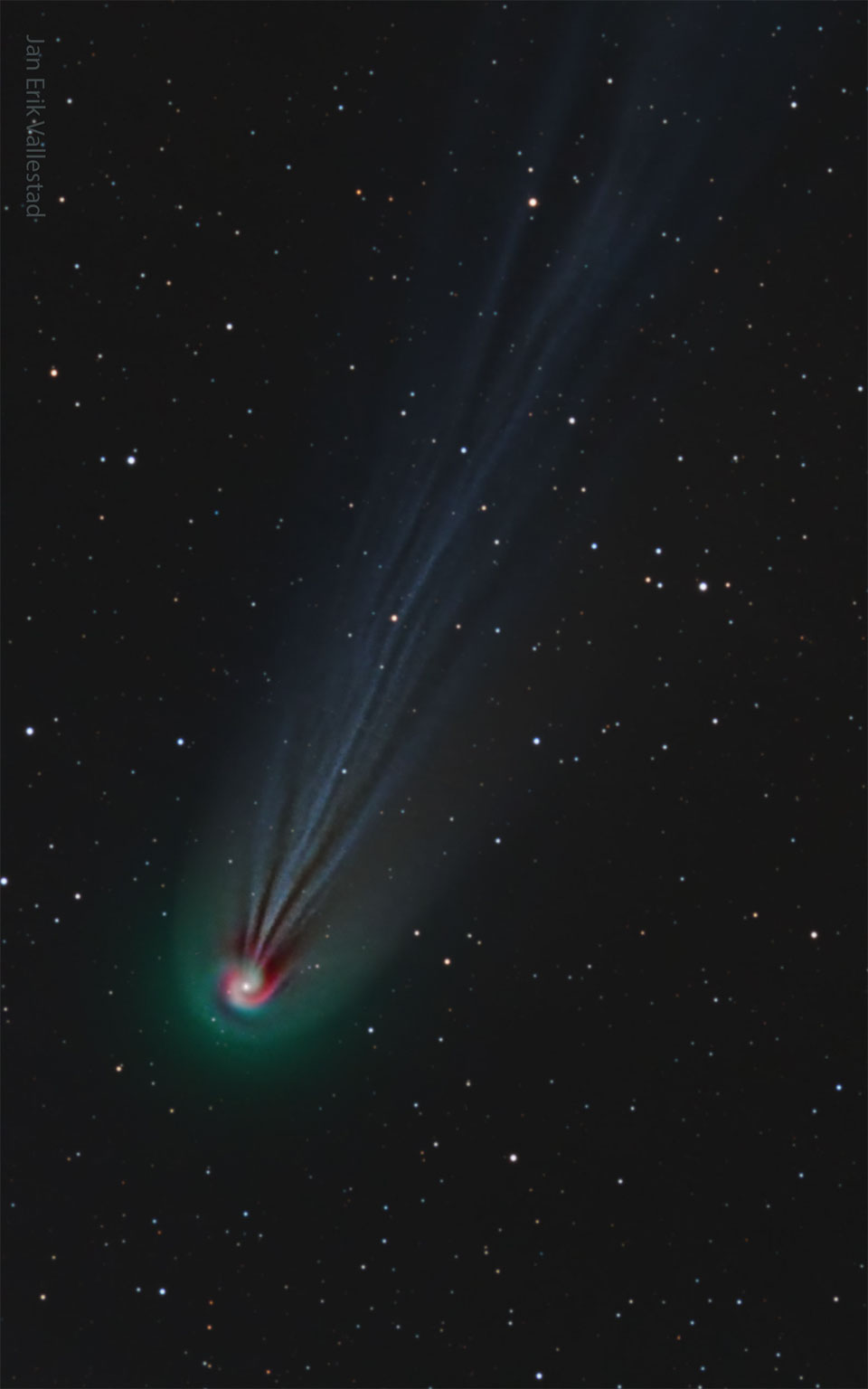2024年3月18日
Comet Pons-Brooks’ Swirling Coma
Image Credit & Copyright: Jan Erik Vallestad
Explanation: A bright comet will be visible during next month’s total solar eclipse. This very unusual coincidence occurs because Comet 12P/Pons-Brooks‘s return to the inner Solar System places it by chance only 25 degrees away from the Sun during Earth’s April 8 total solar eclipse. Currently the comet is just on the edge of visibility to the unaided eye, best visible with binoculars in the early evening sky toward the constellation of the Fish (Pisces). Comet Pons-Brooks, though, is putting on quite a show for deep camera images even now. The featured image is a composite of three very specific colors, showing the comet’s ever-changing ion tail in light blue, its outer coma in green, and highlights some red-glowing gas around the coma in a spiral. The spiral is thought to be caused by gas being expelled by the slowly rotating nucleus of the giant iceberg comet. Although it is always difficult to predict the future brightness of comets, Comet Pons-Brook has been particularly prone to outbursts, making it even more difficult to predict how bright it will actually be as the Moon moves in front of the Sun on April 8.
Total Eclipse Info: 2024 Total Solar Eclipse from NASA
Tomorrow’s picture: sunset road
庞士-布鲁克斯彗星的涡旋状彗发
影像提供与版权: Jan Erik Vallestad
说明: 在下个月的日全食期间,可见到明亮的彗星。之所以会出现这种不寻常的巧合,则是因为庞士-布鲁克斯彗星(12P/Pons-Brooks)这次回访太阳系内围时,恰逢地球4月8日的日全食,而且与太阳相隔仅有25度。目前,这颗彗星的亮度在裸眼极限附近,最佳的方式是使用双筒望远镜,在刚入晚天空的双鱼座内寻找它的身影。不过纵然如此,庞斯-布鲁克斯彗星目前在相机的深空影像里,其景观已经相当精采。这幅由3张特定颜色的照片组合而成的主题影像,呈现了这颗彗星变幻不定的淡蓝离子尾与泛绿的外层彗发,并突显彗发附近的涡旋状泛红气体。而这颗庞大冰球彗星缓缓转动的彗核所释出的气体,咸信是造成这个涡旋的主因。预测彗星未来的亮度,一直是相当困难的工作,而庞斯-布鲁克斯更是特别容易发生爆发的彗星,这让预侧4月8日当月亮遮掩太阳的日食期间,它的实际亮度会是多少变得格外的困难。
日全食信息: 来自NASA的2024年日全食
明日的图片: sunset road




Pingback: 庞士-布鲁克斯彗星的离子尾 – NASA中文
Pingback: NGC 7714: 星系碰撞后的星爆活动 – NASA中文